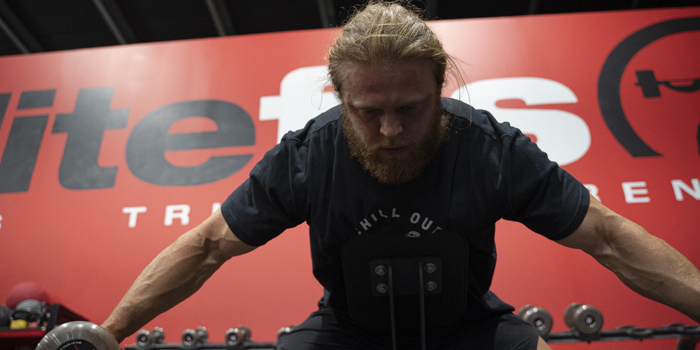
Breaking the Overuse Injury Cycle
Torn rotator cuffs, wicked knots, adhesions, and tendonitis. All of these are common signs of overuse injuries.
If your first thought is, what surgery or shot can I get to “fix” this issue, you should think again. Instead, look at why it occurred in the first place. Otherwise, it may re-occur after your surgery/injection because you haven’t addressed the root of the problem.
The cause of an overuse injury is in its name. The amount of use/wear and tear exceeds the muscle, tendon, or ligaments’ ability to recover and repair itself. Many factors can prevent or impede recovery in this scenario, but we will explore the formula and cycle of overuse injuries here.
Formula
There are ways to quantify how hard you work when training: volume (set x reps), workload, or tonnage (sets x reps x weight or intensity). Similarly, when assessing the stress we put on a tissue (herein referred to as Tissue Insult) we can use a variation of these equations that account for range of motion and rest.

As insult to tissue increases, you can use this equation to determine the main contributors to the injury.
If nothing is obvious, then you need to consider the possibility that the tissues are under-conditioned. Tissues need an accommodation period if stress is going to increase. So, start slow if you’re starting a new activity or jumping back into an old one after an extended break.
Remember, you’re not as good as you once were, but you can be if you’re smart. So take control of what you can and REST.
REST is defined as doing nothing in certain cases, but for most, rest means doing a complementary amount of activity to support recovery between the big insult days. Strength coaches recognize this as the High Lo template. It's implemented in strength sports by lowering the load or getting away from the barbell and working on your weak points using something else. Alternatively, in team sports, you focus on individual skill work rather than high-contact days.
The Overuse Injury Cycle
Overuse injuries don't come out of nowhere—they build up over time due to incomplete rest. As shown by the formula above, incomplete rest means that an injury, especially one caused by overuse, never starts at zero. For example, if you are already having a bad day, an outburst can be caused when someone drinks the last monster.
Overuse injuries are the same way. Whether it's large jumps in volume or bending over to tie a shoe, the weakest tissue was forced to take a load it couldn’t handle, causing pain or injury.

As you can see, the cycle restarts after compensations occur because the body has found new ways to function that are less painful, but eventually, like the initial movement pattern, it too will reach a limit.
Treatment Options
Treatments don’t actually “fix” anything. They only provide adaptability. This mindset change takes us away from thinking of humans as mechanistic beings that require replaceable parts when something doesn’t work. Instead, humans must be viewed as complex, resilient, versatile organisms that can function and perform even when parts are missing or not working properly.
adapt-a-bil-i-ty
the condition of being able to adjust to new conditions
the capacity to be modified for a new use or specific purpose
1. Cortisone
Cortisone is a great option for “new” issues where inflammation is the primary culprit as it breaks the inflammation cycle. In the cases where symptoms return, there are usually muscle inhibition and kinetic chain compensation issues causing the reoccurrence.
2. Surgery
Surgery “fixes” the tissue by reconnecting tears or cleaning up frayed tendons, for example. Surgeries create tissue trauma, however, and this is partly why extensive rehab is needed post-surgery.
3. Conservative Care
Conservative care can address all aspects of the overuse injury cycle, although it takes longer than injection and surgery. Conservative care should be comprehensive in assessment and multi-modal in treatment, causing the compensations and underlying issues creating the problem to be addressed and corrected.
Multimodal treatment can include dietary changes, lifestyle/activity alterations, and multiple manual therapies (joint manipulation, electro-acupuncture/dry needling, and myofascial release). These are utilized to resolve inflammation, remove spasms and adhesions, restore muscle activation, and improve kinetic chain function.
Conclusion
Having worked in both the Canadian and American healthcare systems, I know conservative care before surgery or injection can improve your outcomes by decreasing rehab time and the rate of reoccurrence. In certain cases, conservative care has even removed the need for surgery or injection altogether.
Here at Werner Athletics, we take our experience and knowledge to help you achieve lasting results in fewer visits.
Find yourself a practitioner to help you.
Recover. Adapt. Perform.

Dr. James Werner is a performance chiropractor and coach to elite hockey players ranging from junior to 15-year pros. James uses chiropractic adjustments, acupuncture, lab tests, and his strength and conditioning background to help his athletes reach peak performance despite their injuries or age.









